North Korea’s Artificial Intelligence Research: Trends and Potential Civilian and Military Applications
Introduction
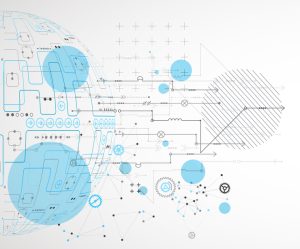 The advent of artificial intelligence (AI), particularly its sub-field machine learning (ML), has witnessed substantial global progress over the past decade, fueled by advancements in computation power and a surge of data accessibility since the 2010s. While many nations have significantly invested in these technologies for a myriad of civilian and military applications, assessing North Korea’s AI/ML landscape poses a unique challenge. Following the development of its “Eunbyul” AI program in 1998, the country’s increasingly isolated, secretive nature and constraints posed by the current sanctions regime would arguably make evaluations of its current capabilities extremely speculative. However, while attempts to procure hardware for AI development may be stymied, open-source information, including scientific journal articles and state media, suggests North Korea is actively developing and promoting AI/ML technology across various sectors to keep abreast of global progress.
The advent of artificial intelligence (AI), particularly its sub-field machine learning (ML), has witnessed substantial global progress over the past decade, fueled by advancements in computation power and a surge of data accessibility since the 2010s. While many nations have significantly invested in these technologies for a myriad of civilian and military applications, assessing North Korea’s AI/ML landscape poses a unique challenge. Following the development of its “Eunbyul” AI program in 1998, the country’s increasingly isolated, secretive nature and constraints posed by the current sanctions regime would arguably make evaluations of its current capabilities extremely speculative. However, while attempts to procure hardware for AI development may be stymied, open-source information, including scientific journal articles and state media, suggests North Korea is actively developing and promoting AI/ML technology across various sectors to keep abreast of global progress.
As part of a comprehensive review project, this analysis presents an initial survey of North Korea’s AI/ML research, shedding light on the country’s AI/ML development efforts across North Korea’s government, academia and industry. Among those, it is worth noting that North Korean researchers have applied AI/ML for sensitive applications, such as wargaming and surveillance, and continued scientific collaboration with foreign scholars until recently. Given that AI/ML is a software-centric technology that can be transferred via intangible means, called intangible transfer of technology (ITT), it is important to monitor such activities and, if necessary, implement measures to mitigate potential sanctions risks within the academic and private sectors. This can be achieved by enhancing academic scholars’ awareness of such risks, particularly in the realms of international conferences and cloud computing services.
Overview of North Korea’s AI/ML Development
North Korean efforts to develop AI/ML have been consistently seen over three decades across various sectors. The DPRK’s foray into AI/ML appears to have commenced in the 1990s, primarily to address nationwide challenges, from forecasting air pollution levels to better preparing for droughts, monitoring hydro turbine vibration, and most recently, applying AI/ML during the COVID-19 pandemic to create a model for evaluating proper mask usage and prioritizing clinical symptom indicators of infection.[1]
In recent years, the state has placed a strong emphasis on the development of AI/ML as an “informatized/digitized economy,” as reflected in its Socialist Constitution. Specifically, North Korea amended Article 26 of the Constitution in April 2019 to add “informatization” (정보화) to its core lines of economic efforts, including Juche-oriented, self-reliance, (주체화), modernization (현대화) and scientization (과학화) to achieve a socialist independent national economy. In that same year, state media reported that the country believes its digital economy’s growth is driven by advancements in AI and that data is more valuable than gold and crude oil in the era of AI.
To spearhead these efforts, North Korea established the Artificial Intelligence Research Institute (인공지능연구소) under the Bureau of the Information Industry Guidance (정보산업지도국) in 2013, which has been incorporated into the Ministry of Information Industry (정보산업성) since 2021. This initiative aims to elevate the Bureau’s authority to the ministry level, thereby actively promoting the informatization and digitalization of the country. Previously, these efforts were impeded by internal competition and a lack of cooperation among government agencies.
In academia, North Korea has embraced AI/ML across various educational levels. In 2014, Kim Il Sung University established the High-Technology Development Center (renamed the Center for Advanced Technology Research and Development [CATRAD]), focusing on cutting-edge technologies such as voice and text recognition, simultaneous interpretation and big data analysis. Since 2018, many universities have followed suit and introduced AI-focused programs.
At the enterprise level, North Korean companies have recently been promoting their commercial products that employ AI/ML technologies. In 2020, the Mangyongdae Information Technology Corporation (만경대 정보대기술사) launched two mobile phones, the Azalea 6 and 7 (Jindallae 6, 7, 진달래 6, 7). The company claims to have successfully incorporated technologies for fingerprint, voice, facial and text recognition, based on deep neural networks (DNN), into this device. The company is staffed by dozens of researchers, primarily from Kim Il-sung University and Kim Chaek University of Technology and is currently promoting domestic technical cooperation with other research institutes. In addition, according to a flyer posted in North Korean media, the Yalu River Technology Development Company (압록강기술개발회사) has applied DNN to its security surveillance systems and intelligent IP cameras. The company claims to actively promote collaborative research and development with renowned IT companies from over 20 countries (Appendix 1).[2]
North Korea has demonstrated a comprehensive approach to developing its AI/ML capabilities across sectors, encompassing government initiatives, academia and commercial applications. There is evidence of concerted efforts to leverage these technologies, such as nuclear safety and wargaming, to achieve its broader economic and technological goals, as discussed in the case studies that follow. It should be noted that the current sanctions regime limits scientific collaboration with North Korea, as these transfers of knowledge through collaboration with foreign scholars pose risks of dual-use applications, even for non-military and non-nuclear purposes.
Study Highlight 1: Civilian Application—Nuclear Safety
In 2022, the North Korean nuclear scientists Ho Il Mun, So Chol and others published a study titled “PWR core loading pattern optimization with adaptive genetic algorithm” in the academic journal Annals of Nuclear Energy. Genetic algorithms (GA) are a machine learning technique that aims to find optimized solutions for a problem by mimicking the evolution of genes, such as mutation and crossover. In a pressurized water reactor (PWR), ensuring the optimal arrangement of fuel rods, known as the fuel loading pattern, is essential for maintaining reactor safety. Specifically, by optimizing this pattern, nuclear operations can secure a necessary safety margin to prevent particular fuel rods from overheating. This optimization involves arranging the fuel rods with varying properties, such as levels of enrichment, and mitigates the risk of nuclear accidents, ultimately contributing to the overall safety of the reactor and an increase in power generation. The study concludes that their version of GA is proven to be faster and more effective than other referenced GAs in finding optimal fuel loading patterns.
As faculty members of the Energy Science Department of Kim Il-sung University, Ho Il Mun and So Chol have primarily focused on the civilian applications of nuclear technology. The two scholars appear to have been collaborating on fuel assembly and burnup analysis in the context of PWRs or light water reactors (LWRs) since 2005 and have worked together on more than ten projects (Appendix 2). Their primary focus for scientific simulations is 1,000 MWe PWR reactors, with specific design data presented in Appendix 3.[3]
Study Highlight 2: Military Application—Wargaming/Battle Simulation
In 2022, the North Korean journal Information Science indicated that a research project was conducted focusing on the development of a wargaming simulation using a machine learning method called reinforcement learning (RL).[4] In RL, an agent is trained to maximize rewards in a given environment through trial and error, aiming to achieve goals set by an engineer. For instance, consider an engineer who wants to develop an algorithm that enables a robot to ride a swing to reach the highest possible height. In this case, the robot capable of bending its knee acts as the agent, and reaching the maximum height is a goal set by the engineer to which the reward is given. The environment is the swing ride, where the robot continually adjusts its knee-bending timing to propel the swing optimally, thereby leading to maximum accumulated rewards. As exemplified by Google’s AlphaGo, RL is extensively employed across a myriad of domains, necessitating decision-making and optimization, potentially extending its utility to military applications (Appendix 4).
The study indicates that North Korean scientists opted for RL for wargaming purposes since they view the running speed of RL as faster than that of other methods. While the specifics of the agent and environment are not explained, information related to the rewards provides insight into what North Korea aims to achieve with this simulation. Specifically, the study established three criteria for reward calculation: victory in battle, the ratio between the number of artillery shells landed on the enemy and the number of shells fired by the agent, and the ratio of survival time of the agent to total conflict duration.[5] This suggests North Korea’s conceived wargaming environment might be actual conflicts at a tactical level involving artillery shells.
There are also clues for assessing potential military considerations of the simulation. In their research, the North Korean authors referenced a study titled “Adaptive Human Behavior Modeling for Air Combat Simulation,” conducted by Chinese scholars and published on the Institute of Electrical and Electronics Engineers (IEEE) platform. The Chinese lead author, Jian Yao, is associated with the Academy of Military Sciences or the National University of Defense Technology (NUDT), which is listed on the US trade denylist called the Entity List. Her research primarily focuses on military applications, as evidenced by her works: “Analyzing Ballistic Missile Defense System Effectiveness Based on Functional Dependency Network Analysis” and “Weapon Effectiveness Simulation System (WESS)” (Appendix 5). Given Yao’s consistent focus on military applications and her affiliation with the military organization, it is plausible that North Korea may also aim to develop wargaming simulations applicable to the military domain beyond the current embryonic gaming simulations to enhance its strategic planning.
Sanctions and Export Control Implications
As evidenced by the aforementioned cases, despite the current sanctions regime, especially the United Nations Security Council Resolution (UNSCR) 2321 of 2016 and the prohibition of scientific collaboration with North Korea, unintended risks abound.
Regarding North Korean companies, there is a significant risk that any international cooperation on AI with Yalu River Technology Development Company could lead not only to a breach of sanctions, but also to being listed on the US Entity List. US export regulations allow the Department of Commerce to add entities whose activities act against US foreign policy interests, including human rights abuses. For this reason, a Chinese tech company, HikVision, was listed in 2019 for its surveillance products allegedly used in human rights abuses in China. North Korea’s Yalu River Technology Development Company currently advertises its scientific collaborations with enterprises from roughly 20 countries (Appendix 1). If such cooperation exists and continues, they may lose access to US technologies and products as long as the US continues to view North Korea as a country with human rights concerns.
As for the nuclear safety-related studies, there has been no record of international academic collaboration involving the authors. However, it is worthwhile to keep monitoring scholars’ academic activities concerning applications of AI. For example, authors’ expertise in and activities related to burnup analysis—fuel containing plutonium isotopes desirable for nuclear weapons—could shed insight on current and potential proliferation activities.
North Korea’s AI-driven military study also suggests significant implications for sanctions and export controls. First, the North Korean authors collaborated with Chinese scholars associated with a company currently under US financial restrictions. The North Korean journal does not provide detailed information about the lead author, Ri Jong Hyok. However, an open-source database shows a publication history for an individual with the same name specializing in AI/ML. Specifically, the database indicates that Ri Jonghyok (author identifier: 57203266720), affiliated with Kim Il-sung University, coauthored a few studies with Chinese scientists between 2018 and 2020.
Moreover, one of these collaborators, Wenliang Huang (Author identifier: 56161896800), is associated with China Unicom Ltd., an organization currently subject to financial restrictions imposed by the US Treasury Department. Unicom is also included in the Non-Specially Designated Nationals Chinese Military-Industrial Complex Companies List (NS-CMIC List) since the US considers activities of its related organizations to be detrimental to US national security and foreign policy interests.
Second, Ri’s publication history hints at potential channels for technology transfers. In 2023, Ri published a paper titled “Target adaptive extreme learning machine for transfer learning.” Transfer learning is a technique for fine-tuning a pre-trained model to enhance its performance under specific conditions. Unlike traditional machine learning methods, transfer learning does not require the entire training dataset used for the pre-trained model. Instead, it only requires data that a developer is interested in to further train the pre-trained model for their specific needs or circumstances.
In this regard, transfer learning offers several advantages, including reduced training time and resource requirements, such as data storage and computational power. Moreover, it is theoretically feasible to fine-tune a model initially developed for civilian applications for military purposes. For instance, a model trained by foreign scholars for object detection purposes in aerial environments could be adapted for further fine-tuning that uses data pertaining to military objects that North Korea is interested in. The scope of military simulation can also be expanded through transfer learning to cover more complex combat situations. For example, an agent trained in 2-versus-1 air combat scenarios could be transferred to 2-versus-2 scenarios for further training.
The benefits of transfer learning highlight potential risks associated with technology transfers via intangible means, such as sharing electronic files, a pre-trained model in this context, through email and cloud computing services. Many cloud computing services, such as Google Collab, Microsoft Azure and other enterprises, offer AI/ML development environments. These environments are supported by computing power, including a Graphic Processing Unit (GPU), TensorFlow Processing Unit (TPU) and NVIDIA’s A100 and H100 units. Therefore, the potential proliferation risks linked with ITT and cloud computing services could negate the effectiveness of the sanctions regime and export controls that mainly focus on the transfer of physical goods in general.
Finally, international conferences are platforms that can be—and have already been—exploited by North Korean scholars to seek technical assistance from foreign researchers. The IEEE, for example, publishes numerous studies on AI/ML and military simulations and hosts various international conferences involving such topics (Appendix 4).[6] If North Korean scholars attend these conferences to seek technical advice from foreign experts, it could lead to potential violations of sanctions and export controls. It is because of this risk of ITT that UNSCR 2270 prohibits the transfer of any items, including both physical goods and technologies, that could enhance operational capabilities of the North Korean military and export control regulations of the US, the European Union (EU) and South Korea prohibit their nationals from providing technical assistance to foreigners posing military risks through intangible means such as conversation, visual inspection or demonstration.
Conclusion and Policy Recommendations
North Korea’s recent endeavors in AI/ML development signify a strategic investment to bolster its digital economy. This commitment is underscored by constitutional amendments fostering the digitization and informatization of its socialist economy, coupled with institutional reforms to address competing self-interest across government offices. The promotion of AI also extends across academia, as evidenced by the establishment of AI-focused programs in secondary education and universities. North Korean scientific projects often focus on nationwide concerns, such as pandemics and environmental issues, and enterprises have recently begun launching commercial products incorporating AI/ML technologies and nuclear safety research, demonstrating a multi-faceted approach.
However, the inherent dual-use nature of AI/ML technologies presents numerous challenges. For instance, North Korea’s pursuit of a wargaming simulation program using RL reveals intentions to better comprehend operational environments against potential adversaries. Furthermore, North Korea’s ongoing collaborations with foreign scholars pose concerns for the sanctions regime. Moreover, the conversion of civilian AI technology into military applications poses a substantial risk, particularly in cloud computing environments that sidestep the need for specialized hardware. And finally, international conferences could be exploited by North Korea to seek technical assistance from foreign scholars.
To effectively address the potential sanctions and proliferation risks posed by North Korea’s AI/ML endeavors, national authorities should proactively engage with cloud computing service providers and academic/professional associations that host international conferences on emerging technology. Discussions with cloud computing service providers should center on raising awareness of potential threats posed by North Korea and considerations for enhancing customer screening during onboarding. For conference hosts, deliberations should revolve around devising ways to apprise scholars of the risks associated with international collaborations, ensuring they do not inadvertently support undisclosed military applications in violation of UN and other unilateral sanctions while safeguarding academic freedom.
***
DOWNLOAD PDF OF APPENDICES HERE, OR VIEW BELOW
Appendix I. North Korea’s Commercial Products Employing AI/ML.
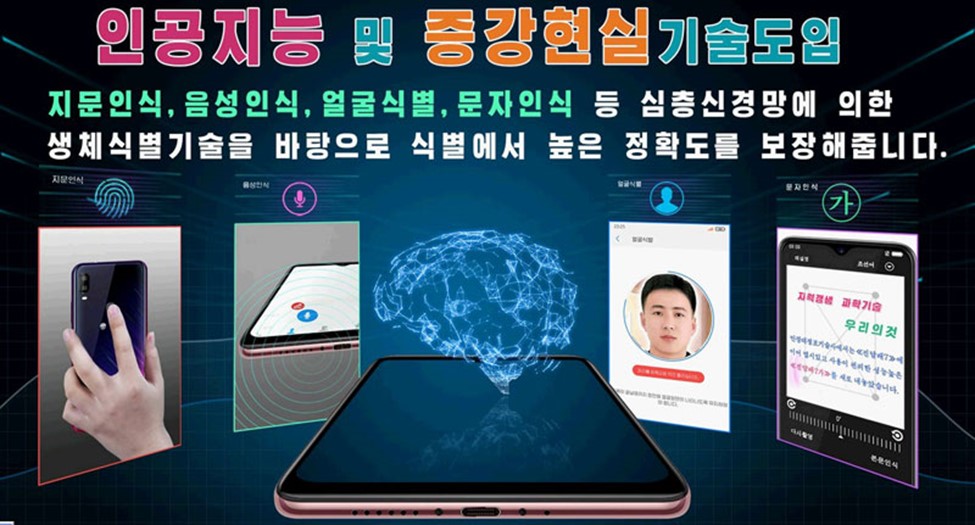
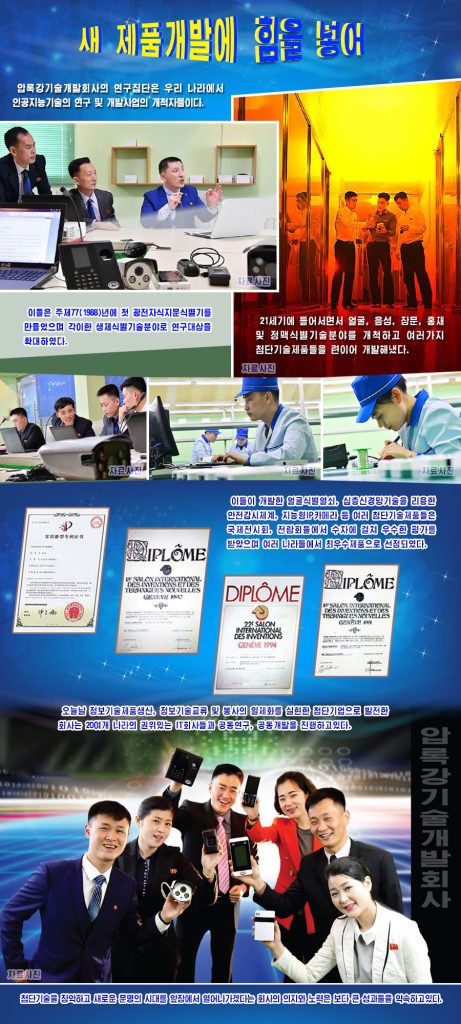
Appendix II. Publication List of Ho Il Mun and So Chol.
Appendix III. Visual information on 1,000 MWe PWR.
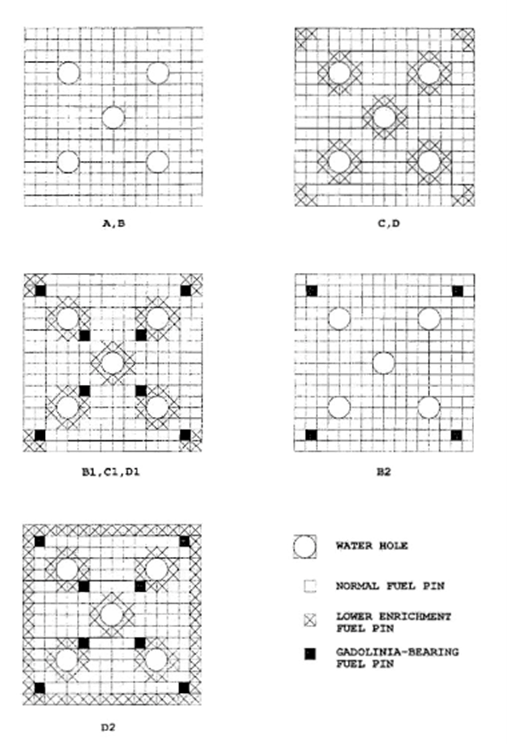
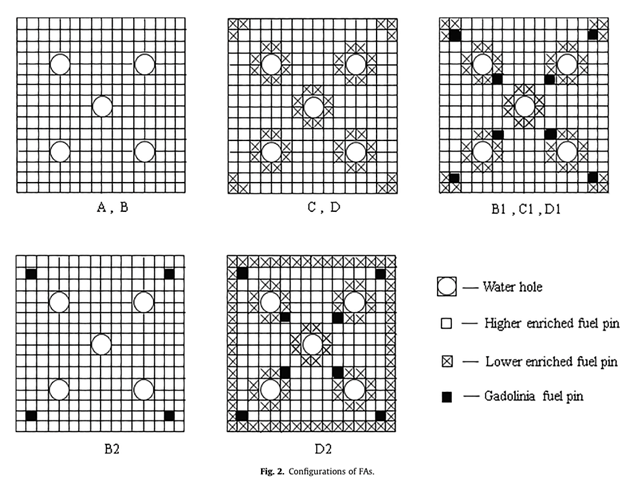
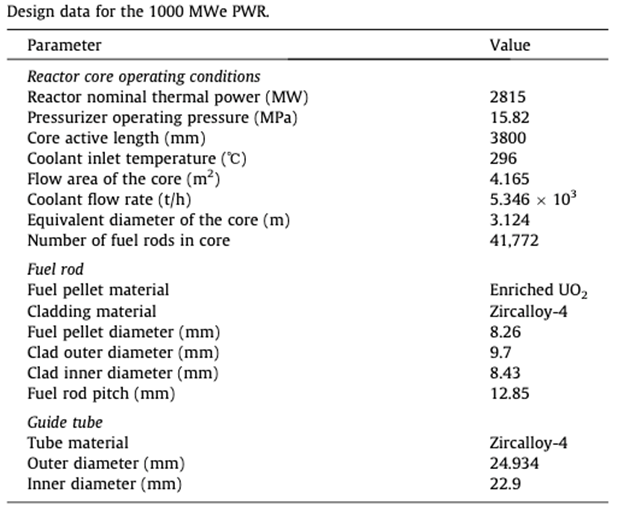
Appendix IV. Examples of AI/ML/RL Studies for Potential Military Applications.
Appendix V. List of Jian Yao’s Studies.
- [1]
See 정영태, “단층신경망에 의한 벡토르량자화의 한가지 방법,” Electronics, no. 6 (1997): 12-14; 한혁일 and 정혜경, “인공신경망리론에 의한 대기오염농도 예보방법,” Meteorology and Hydrology, no. 3 (2006): 35-36; 리은하, “최근년간 우리 나라 가물현상의 변동특징과 신경망에 의한 가물예보방법,” Meteorology and Hydrology, no. 1 (2018): 8-9; “인공지능기술이 결합된 수력타빈발전기진동감시분석체계 개발,” DPRK Today, March 5, 2020, https://kcnawatch.org/newstream/1583377304-224618439/%ec%9d%b8%ea%b3%b5%ec%a7%80%eb%8a%a5%ea%b8%b0%ec%88%a0%ec%9d%b4-%ea%b2%b0%ed%95%a9%eb%90%9c-%ec%88%98%eb%a0%a5%ed%83%80%eb%b9%88%eb%b0%9c%ec%a0%84%ea%b8%b0%ec%a7%84%eb%8f%99%ea%b0%90%ec%8b%9c%eb%b6%84/; and 최은철 , 김충일 and 박은일 , “신경망에 의한 COVID-19감염증의 림상증상지표들에 대한 우선순위결정방법,” Journal of Kim Il-sung University, no. 1, (2023): 79-83.
- [2]
See “《진달래》손전화기와 함께 유명해진 만경대정보기술사,” DPRK Today, February 4, 2020, https://kcnawatch.org/newstream/1580742099-922860060/%E3%80%8A%EC%A7%84%EB%8B%AC%EB%9E%98%E3%80%8B%EC%86%90%EC%A0%84%ED%99%94%EA%B8%B0%EC%99%80-%ED%95%A8%EA%BB%98-%EC%9C%A0%EB%AA%85%ED%95%B4%EC%A7%84-%EB%A7%8C%EA%B2%BD%EB%8C%80%EC%A0%95%EB%B3%B4/; and “진달래손전화기공장,” Naenara, September 22, 2023, https://kcnawatch.org/newstream/1695362705-81807777/%EC%A7%84%EB%8B%AC%EB%9E%98%EC%86%90%EC%A0%84%ED%99%94%EA%B8%B0%EA%B3%B5%EC%9E%A5/.
- [3]
There are at least three foreign reactors that match the size of PWR that the North Korean scholars have focused on. First, Ho Il Mun’s 2011 study titled “3-Dimensional Core Burn-up Calculation of VVER-Type Pressured Water Reactor” suggests North Korea might have been interested in VVER, a type of 1,000 MWe PWR reactor developed by Russia. Second, the aforementioned North Korean study using AI/ML presents visual information similar to the OPR-1000 reactor developed by South Korea (Appendix 3). Lastly, South Korea, Japan, the United States, and the European Union (EU) promoted the construction of two 1,000 MWe Light Water Reactors (LWRs) by establishing the Korean Peninsula Energy Development Organization (KEDO) as part of the implementation of the Agreed Framework of 1994 (see “The VVER Today,” https://www.rosatom.ru/upload/iblock/0be/0be1220af25741375138ecd1afb18743.pdf; And http://www.kedo.org).
- [4]
- [5]
- [6]
See Jonathan Boron and Chris Darken, “Developing Combat Behavior through Reinforcement Learning in Wargames and Simulations,” IEEE, October 20, 2020, https://ieeexplore.ieee.org/document/9231609; Zhang Jiandong, Yang Qiming, Shi Guoqing, Lu Yi and Wu Yong, “UAV cooperative air combat maneuver decision based on multi-agent reinforcement learning,” IEEE, December 2021, https://ieeexplore.ieee.org/document/9679711; Armon Toubman, Jan Joris Roessingh, Pieter Spronck, Aske Plaat and Jaap Van Den Herik, “Transfer Learning of Air Combat Behavior,” IEEE, March 3, 2016, https://ieeexplore.ieee.org/document/7424313; Jaewoong Yoo, Hyunki Seong, David Hyunchul Shim, Jung Ho Bae and Yong-Duk Kim, “Deep Reinforcement Learning-based Intelligent Agent for Autonomous Air Combat,” IEEE, October 31, 2022, https://ieeexplore.ieee.org/document/9925811; and Wieren Kong, Deyun Zhou and Zhen Yang, “Air Combat Strategies Generation of CGF Based on MADDPG and Reward Shaping,” IEEE, November 30, 2020, https://ieeexplore.ieee.org/document/9270471.
